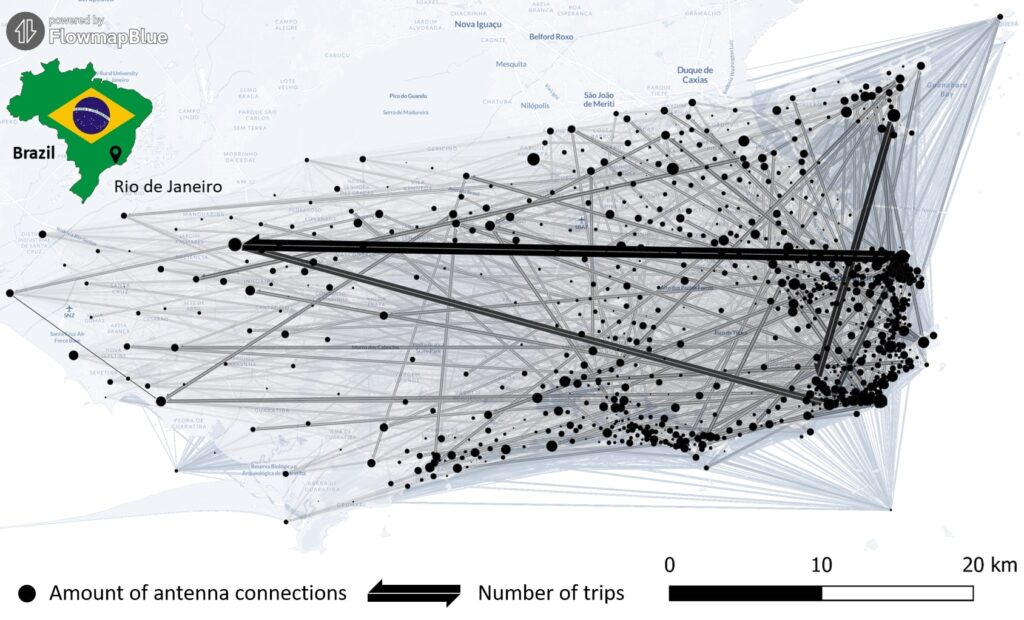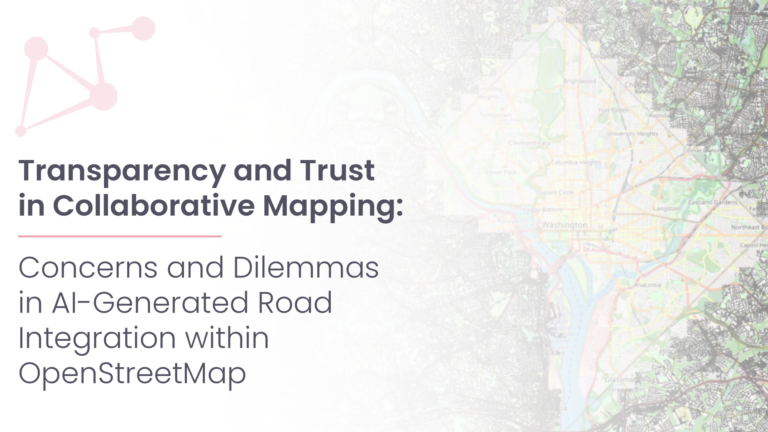Data on mobility behavior can yield valuable insights that are beneficial for various applications such as public policy, emergency response, and urban planning. As the availability of freely-accessible mobility data is limited, the attention to X (formerly known as Twitter) as a data source has increased. Users of the platform can tag their online posts with geocoordinates. This data is openly accessible via the API, enabling researchers to deduce human mobility patterns from these information. However, long-term studies validating X data as a feasible data source are limited and daily geocoded tweet sequences are scarce.
In the research paper “Long-term validation of inner-urban mobility metrics derived from Twitter/X” Steffen Knoblauch, PhD candidate and GIScience member, addresses this issue by assessing the reliability of X data for modeling inner-urban mobility dynamics. For this purpose, the successive tweet locations of individual users in the metropolitan area of Rio de Janeiro, Brazil were tracked, covering a time frame of 27 months. The metrics derived from this data were then compared to metrics based on mobile phone data, exhibiting long-term disparities between both variants.
The results indicate that X data has the potential to capture short-term changes in mobility at an inner-urban scale. However, X policy changes and the availability of publicly accessible tweets can influence mobility metrics, meaning that researchers should not blindly trust this data source for human movement modeling. To improve the reliability of inferences, the researchers propose a combination of multiple analysis techniques, including dynamic and static mobility change detection, simultaneous consideration of various human movement metrics, and sensitivity analysis for modeling parameters. These novel insights gained from a long-term perspective are vital, as X is extensively used by researchers worldwide to infer human movement patterns. Since conclusions drawn from studies using X could be used to inform public policy, emergency response, and urban planning, evaluating the reliability of this data is of utmost importance.
The code used in the research is available on GitHub.
Reference: https://journals.sagepub.com/doi/10.1177/23998083241278275





